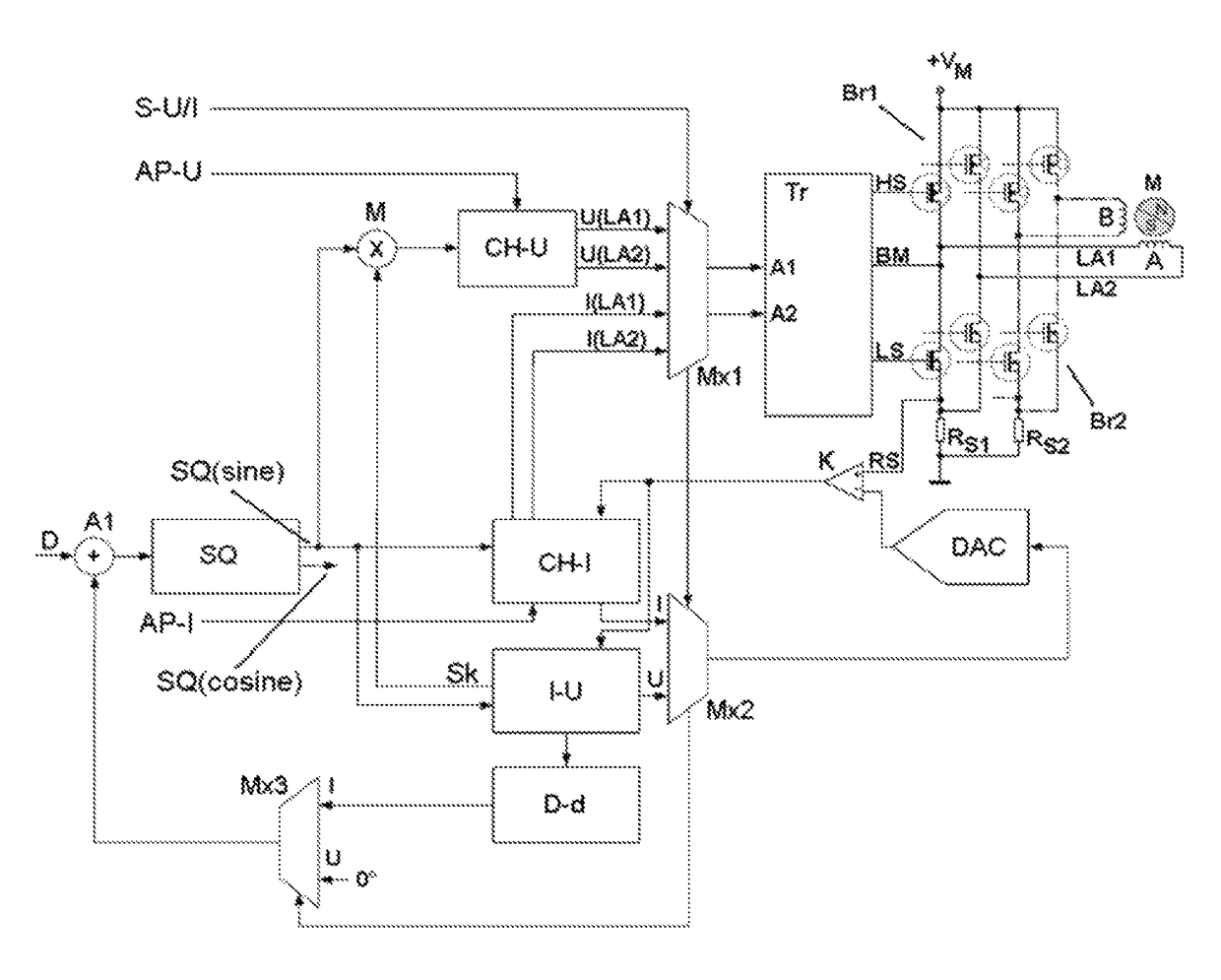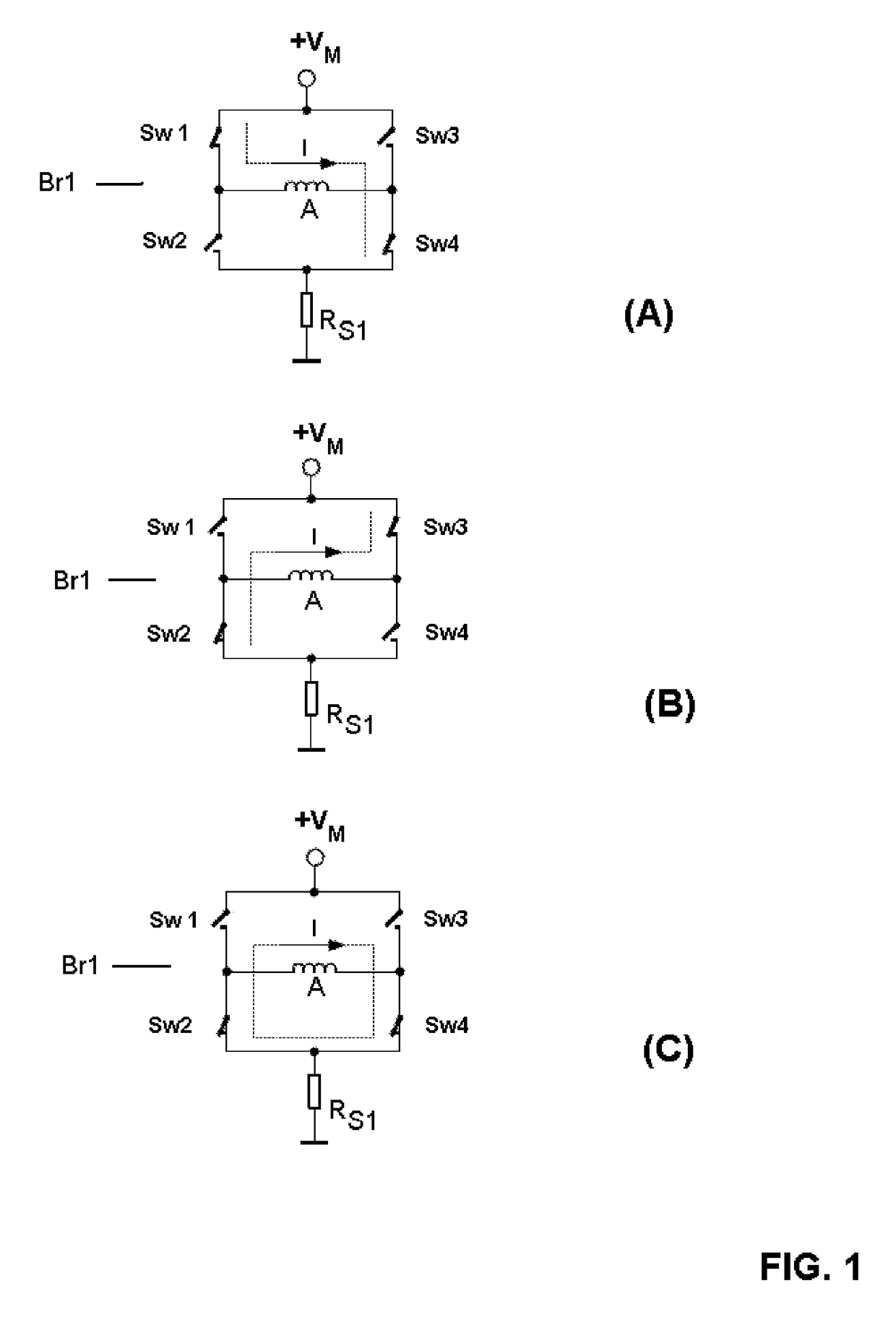Method and circuit arrangement for controlling a stepper motor
a stepper motor and circuit arrangement technology, applied in the direction of dynamo-electric converter control, dynamo-electric gear control, dynamo-electric brake control, etc., can solve the problem of low motor current difficulty, and achieve the effect of optimizing (and particularly calm) the operation of the stepper motor and small circuit complexity
- Summary
- Abstract
- Description
- Claims
- Application Information
AI Technical Summary
Benefits of technology
Problems solved by technology
Method used
Image
Examples
Embodiment Construction
[0025]First, the implementation of the above three chopper phases during the current-regulated operating mode will be explained.
[0026]The three chopper phases are schematically shown in FIG. 1(A), FIG. 1(B) and FIG. 1(C), respectively. Each of these three figures shows a bridge circuit Br1 comprising a first to fourth switch Sw1, Sw2, Sw3, Sw4, wherein a first and a second switch Sw1, Sw2 as well as a third and a fourth switch Sw3, Sw4 are switched in series, and the two series connections are connected in parallel with each other. The motor coil A is connected with the center points of the bridge branches. The foot of the bridge circuit is connected via a measuring resistor RS1 to ground for measuring the actual current flowing in the motor coil, while the head of the bridge circuit is attached to a motor supply voltage VM. The switches Sw1, Sw2, Sw3, Sw4 are operated by means of a driver circuit to which the chopper switch signals are supplied for activating the chopper phases.
[00...
PUM
 Login to View More
Login to View More Abstract
Description
Claims
Application Information
 Login to View More
Login to View More - R&D
- Intellectual Property
- Life Sciences
- Materials
- Tech Scout
- Unparalleled Data Quality
- Higher Quality Content
- 60% Fewer Hallucinations
Browse by: Latest US Patents, China's latest patents, Technical Efficacy Thesaurus, Application Domain, Technology Topic, Popular Technical Reports.
© 2025 PatSnap. All rights reserved.Legal|Privacy policy|Modern Slavery Act Transparency Statement|Sitemap|About US| Contact US: help@patsnap.com



